Aeonium vs. Echeveria: Key Differences Explained
You adore succulents for their unique shapes, vibrant colors, and low-maintenance nature. But have you ever found yourself scratching your head, wondering if that cute little plant is an Echeveria or an Aeonium? Don’t worry, you’re not alone! These succulent lookalikes can easily fool even the most seasoned plant parent. But fear not, we’re about to spill all the secrets to spotting the differences like a total pro. Get ready to impress your friends with your newfound succulent expertise!
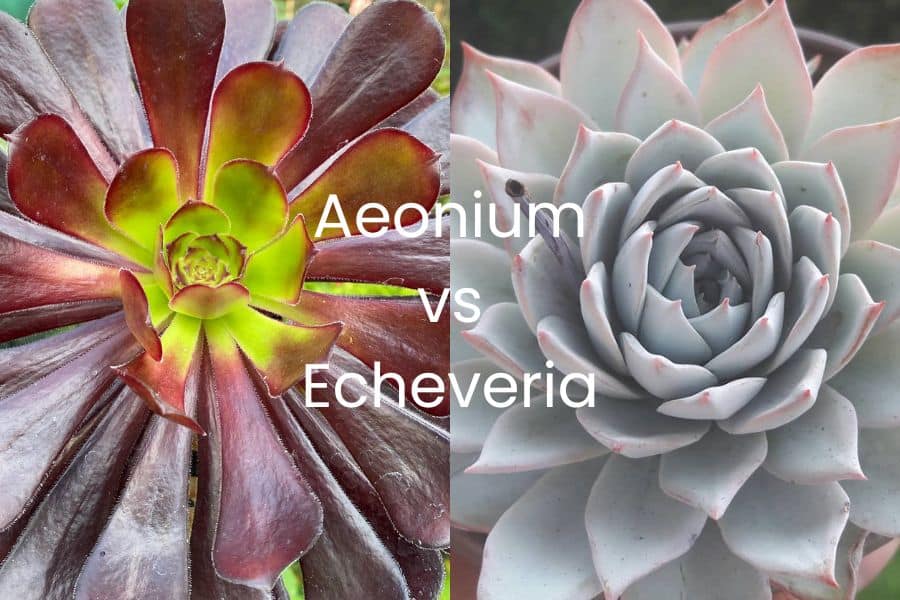
Related Posts:
58 Stunning Aeonium Varieties [With Pictures]
200+ Amazing Echeveria Types [With Pictures]
Contents
Aeonium vs Echeveria: A Showdown of Succulent Siblings
At first glance, these two might seem like identical twins, but look closer and you’ll discover a world of delightful differences. Let’s dive right in!
Appearance: A Tale of Flat vs. Plump
Echeverias flaunt plump, round leaves that give them an adorably chubby look. Aeoniums, on the other hand, sport flatter leaves with tiny teeth along the edges, giving them a slightly edgier vibe.
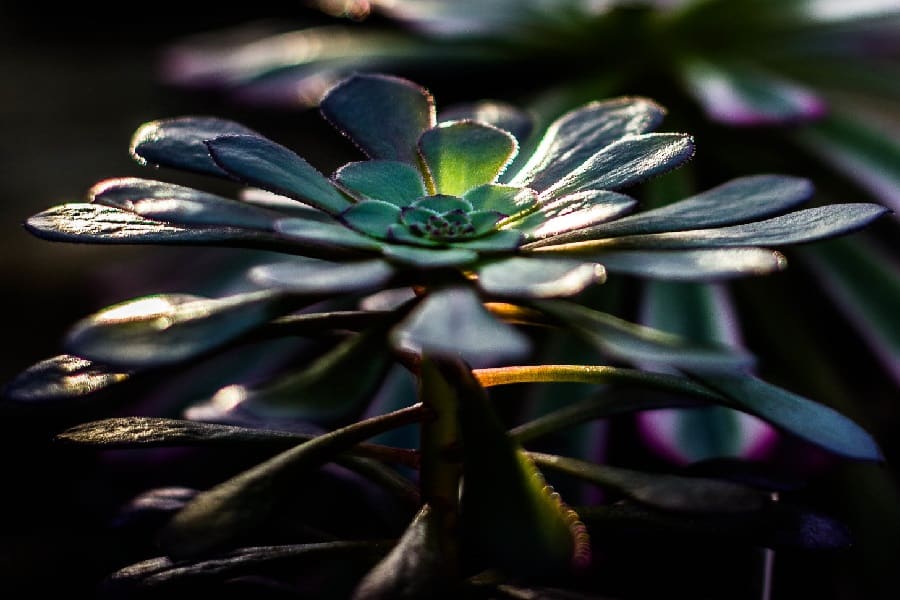

Color Palette: A Kaleidoscope of Hues
Echeverias come in a vibrant rainbow of colors – silver, red, pink, orange, green, blue, and yellow. Some even have contrasting centers, making them look like miniature works of art. Aeoniums, while beautiful, stick to a more subdued palette of yellow stripes, yellow, green, dark red, and black.
Size Matters: From Petite to Towering
While most Echeveria species max out at around 12 inches tall, Aeoniums can grow into towering beauties, reaching up to 5 feet in height when given the right care. So, if you’re looking for a succulent that makes a bold statement, Aeoniums might be your best bet!

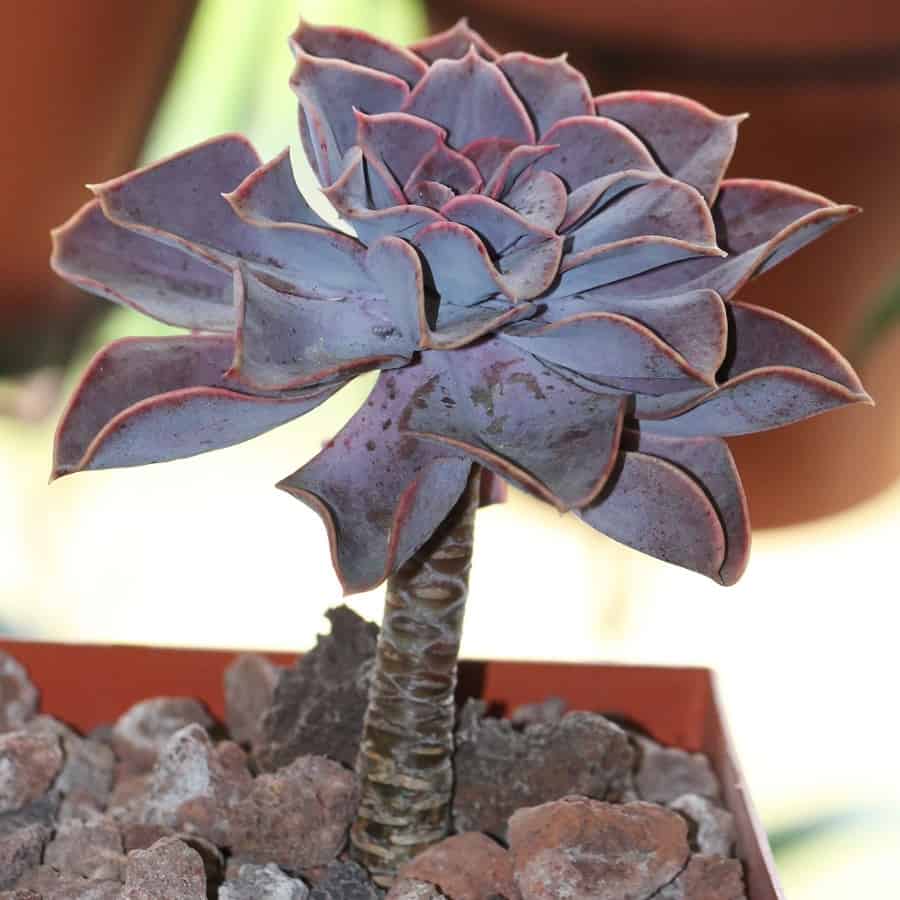
Homeland: A Tale of Two Continents
Echeverias hail from the sunny lands of Central America, which explains their ability to store moisture in their plump leaves. Aeoniums, on the other hand, originate from the Canary Islands off the coast of Africa, which is why they thrive in drier climates but still need a bit more moisture than their Echeveria cousins.
Puppy Love: To Nibble or Not to Nibble?
If you have a furry friend with a penchant for plant snacking, you might want to steer clear of Aeoniums. These succulents contain saponins that can cause tummy troubles like vomiting, diarrhea, and nausea if ingested by pets. Echeverias, on the other hand, might not taste great but are generally safe for curious nibbles.
While their differences are fun to explore, these two plantry pals also share some charming similarities that make them succulent soulmates.
Succulent Sisterhood
First and foremost, both Echeverias and Aeoniums belong to the succulent family. These water-storing wonders are masters of survival in dry conditions, thanks to their thick, fleshy leaves and stems.
Spoon-Fed Beauty
Take a close look and you’ll notice both varieties have spoon-shaped, petal-like leaves that give them an adorable daisy-esque appearance. It’s like Mother Nature’s way of serving up plant cuteness on a, well, spoon!
Tiny but Mighty
While their larger varieties can tower over other succulents, both Echeverias and Aeoniums have petite subspecies that stay a compact 2 inches or less when fully grown. Talk about tiny titans!
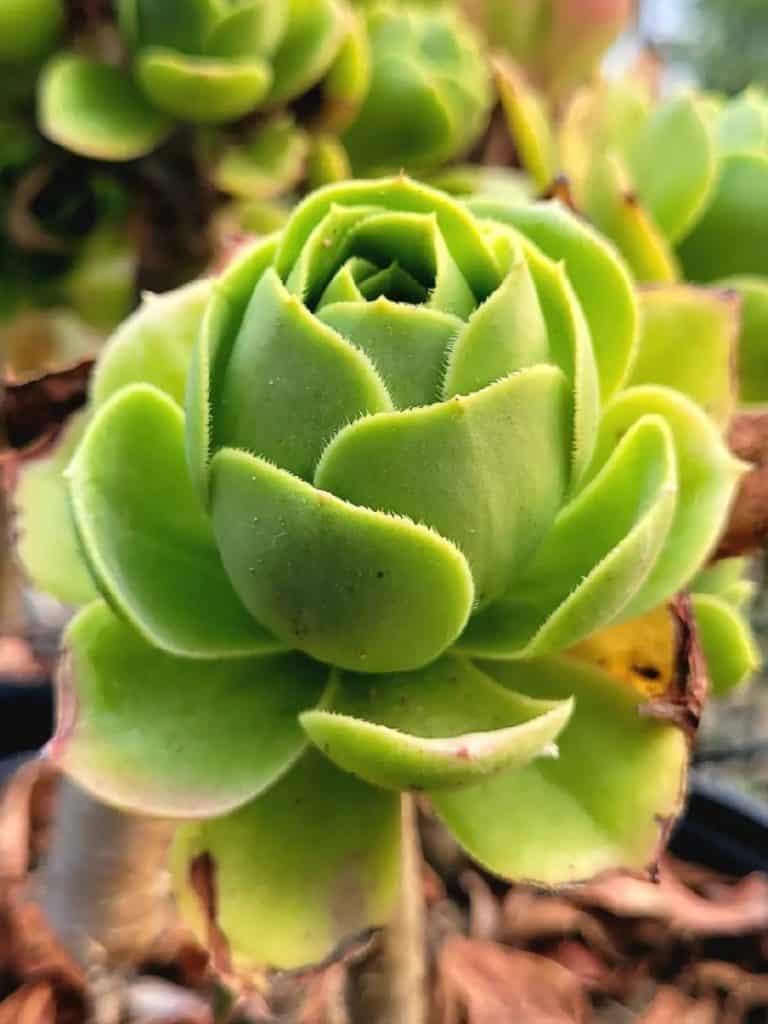

Leggy Issues
Just like siblings who sometimes go through that awkward, gangly phase, both of these succulent cuties can get a bit leggy (stretching out with unsightly bare stems) when they’re not feeling their best. A sure sign they need a little TLC from their plant parents.
Caring for Your Succulent Sidekicks
Now that you’re a pro at telling these two apart, let’s talk about how to keep them happy and thriving!
Aeonium Care Cheat Sheet:
- Light: A balance of sun and shade is key. Too much intense sun can scorch those lovely leaves.
- Soil: A moisture-retaining but well-draining potting mix is perfect.
- Water: Let the soil dry out completely before quenching their thirst, about once a week in summer and monthly in winter.
- Fertilizer: A diluted dose once a month in spring and fall will keep them perky.
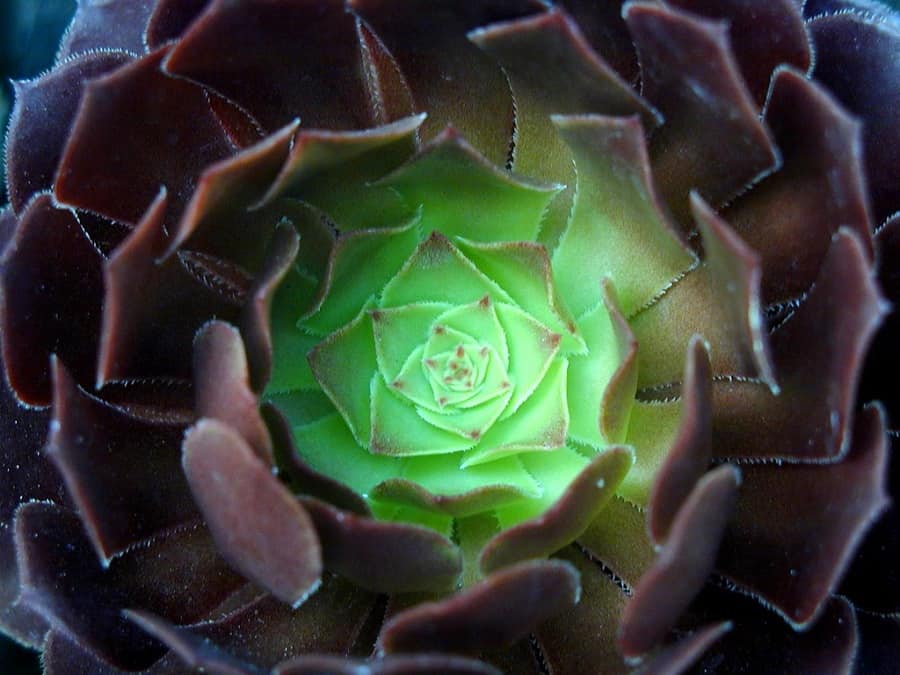
Echeveria Care 101:
- Sunlight: These sun-lovers crave 4-6 hours of direct light daily. If they start stretching out, give them more rays!
- Soil: Well-draining cactus mix is a must to prevent root rot.
- Water: Allow the soil to fully dry out between waterings. Wrinkly leaves are a sign it’s thirsty time!
- Fertilizer: Echeverias are low-maintenance mavens that rarely need extra nutrients.
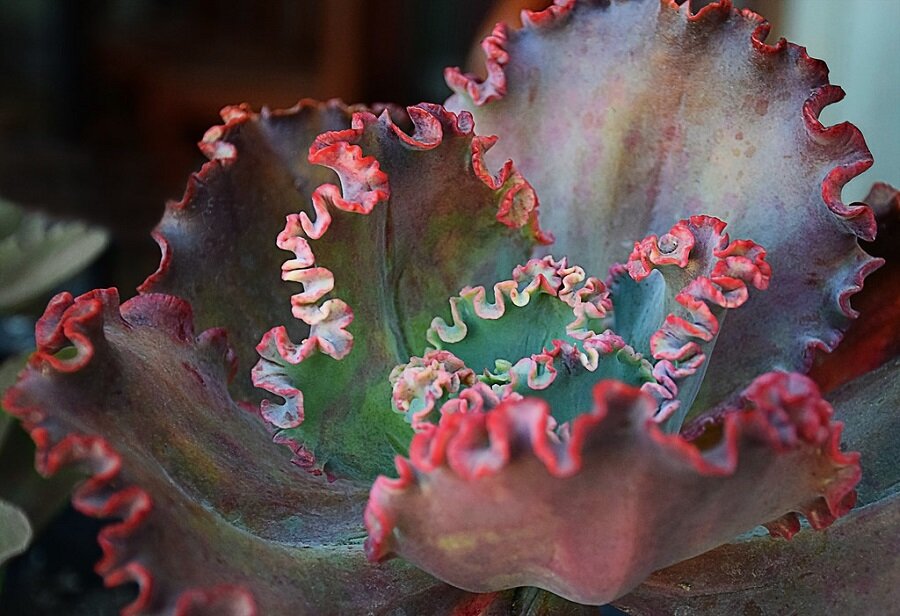
So there you have it, folks! With this guide in your back pocket, you’ll never mistake an Echeveria for an Aeonium (or vice versa) again. Embrace your inner plant nerd and impress everyone with your succulent smarts!
